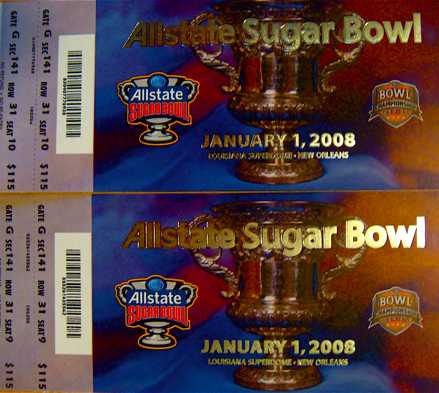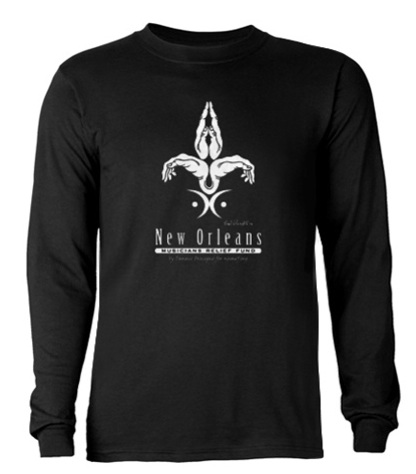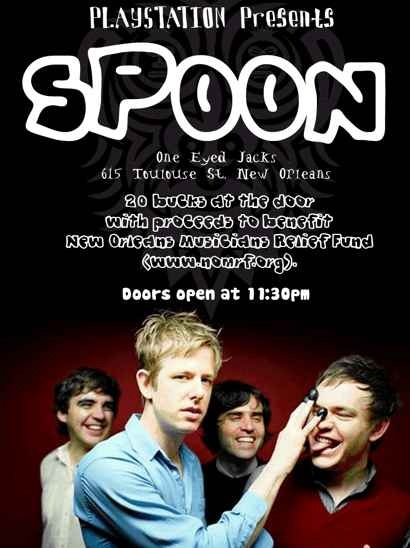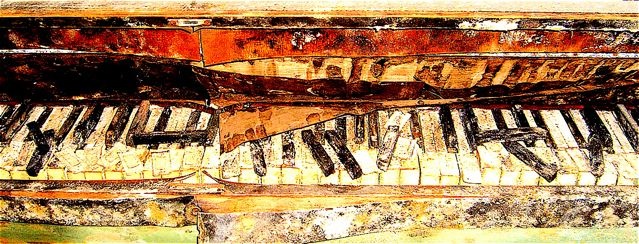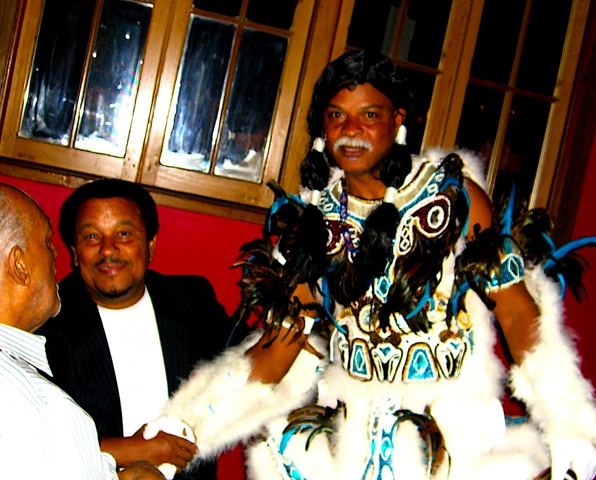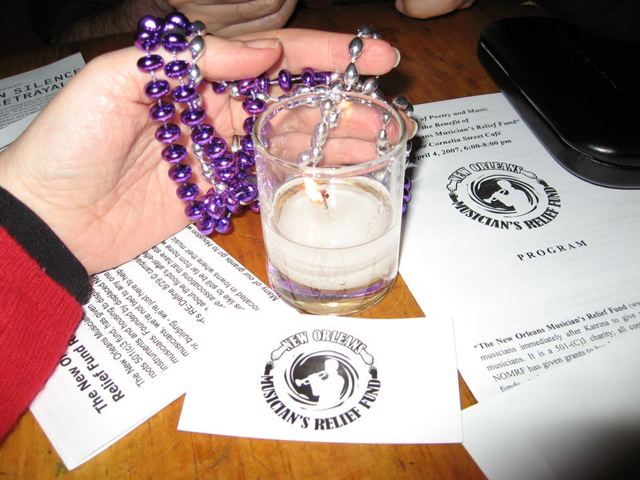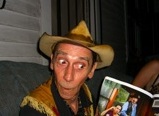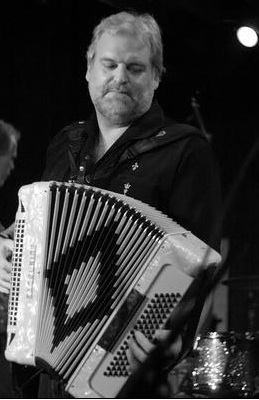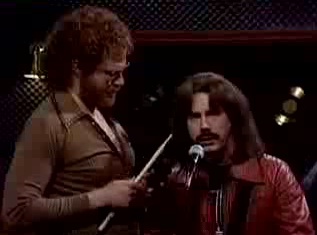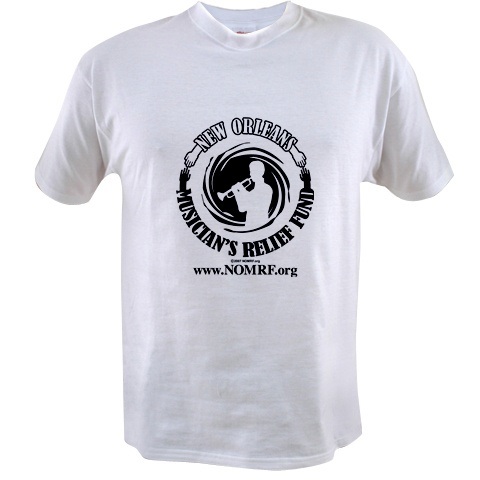
These are the true Anniversary stories from two years ago, when we first began questioning who would be able to come back and under what conditions. Jazzfest rolls on, the Indians still march, and many New Orleans musicians still live in Texas.
Best quote?
Mr. Boudreaux, now safe with his daughter in Mesquite, Tex., stayed put through the storm at his house in the Uptown neighborhood; when he left last week, he said, the water was waist-high. He chuckled when asked if the Mardi Gras Indian tradition could survive in exile. "I don't know of any other Mardi Gras outside of New Orleans," he said.Jazz Musicians Ask if Their Scene Will Survive
By BEN RATLIFF
The New York Times
Published: September 8, 2005
New Orleans is a jazz town, but also a funk town, a brass-band town, a hip-hop town and a jam-band town. It has international jazz musicians and hip-hop superstars, but also a true, subsistence-level street culture. Much of its music is tied to geography and neighborhoods, and crowds.
All that was incontrovertibly true until a week ago Monday. Now the future for brass bands and Mardi Gras Indians, to cite two examples, looks particularly bleak if their neighborhoods are destroyed by flooding, and bleaker still with the prospect of no new tourists coming to town soon to infuse their traditions with new money. Although the full extent of damage is still unknown, there is little doubt that it has been severe - to families, to instruments, to historical records, to clubs, to costumes. "Who knows if there exists a Mardi Gras Indian costume anymore in New Orleans?" wondered Don Marshall, director of the New Orleans Jazz and Heritage Festival Foundation.
"A lot of the great musicians came right out of the Treme neighborhood and the Lower Ninth Ward," said the trumpeter Kermit Ruffins, temporarily speaking in the past tense, by phone from Houston yesterday. Mr. Ruffins, one of the most popular jazz musicians in New Orleans, made his name there partly through his regular Thursday-night gig over the last 12 years at Vaughan's, a bar in the Bywater neighborhood, where red beans and rice were served at midnight. Now Vaughn's may be destroyed, and so may his new house, which is not too far from the bar.
On Saturday evening Mr. Ruffins flew back to New Orleans from a gig in San Diego, having heard the first of the dire storm warnings. He stopped at a lumberyard to buy wood planks, boarded up 25 windows on his house, then went bar-hopping and joked with his friends that where they were standing might be under water the next day.
The next morning he fled to Baton Rouge with his family, and now he is in Houston, about to settle into apartments, along with more than 30 relatives. He is being offered plenty of work in Houston, and is already thinking ahead to what he calls "the new New Orleans."
"I think the city is going to wind up being a smaller area," he said. "They'll have to build some super levees.
"I think this will never happen again once they get finished," Mr. Ruffins added. "We're going to get those musicians back, the brass bands, the jazz funerals, everything."
Brass bands function through the year - not only through the annual Jazzfest, where many outsiders see them, and jazz funerals, but at the approximately 55 social aid and pleasure clubs, each of which holds a parade once a year. It is an intensely local culture, and has been thriving in recent years. Brass-band music, funky and hard-hitting, can easily be transformed from the neighborhood social to a club gig; brass bands like Rebirth, Dirty Dozen and the Soul Rebels have done well by touring as commercial entities. Members of Stooges Brass Band have ended up in Atlanta, and of Li'l Rascals in Houston; there could be a significant brass-band diaspora before musicians find a way to get home to New Orleans. (Rebirth's Web site, www.rebirthbrassband.com, has been keeping a count of brass-band musicians who have been heard from.)
The Mardi Gras Indian tradition is more fragile. Monk Boudreaux is chief of the Golden Eagles, one of the 40 or so secretive Mardi Gras tribes, who are known not just for their flamboyant feathered costumes but for their competitive parades through neighborhoods at Mardi Gras time. (Mardi Gras Indians are not American Indians but New Orleanians from the city's working-class black neighborhoods.) Mr. Boudreaux, now safe with his daughter in Mesquite, Tex., stayed put through the storm at his house in the Uptown neighborhood; when he left last week, he said, the water was waist-high. He chuckled when asked if the Mardi Gras Indian tradition could survive in exile. "I don't know of any other Mardi Gras outside of New Orleans," he said.
These days a city is often considered a jazz town to the extent that its resident musicians have international careers. The bulk of New Orleans jazz musicians have shown a knack for staying local. (Twenty or so in the last two decades, including several Marsalises, are obvious exceptions.)
But as everyone knows, jazz is crucial to New Orleans, and New Orleans was crucial in combining jazz's constituent parts, its Spanish, French, Caribbean and West African influences. The fact that so many musicians are related to one or another of the city's great music families - Lastie, Brunious, Neville, Jordan, Marsalis - still gives much of the music scene a built-in sense of nobility. "Whereas New York has a jazz industry," said Quint Davis, director of Jazzfest, "New Orleans has a jazz culture." (Speaking of Jazzfest, Mr. Davis was not ready to discuss whether there will be a festival next April. "First I'm dealing with the lives and subsistence of the people who produce it," he said.)
And most jazz in New Orleans has a directness about it. "Everyone isn't searching for the hottest, newest lick," said Maurice Brown, a young trumpeter from Chicago who had been rising through the ranks of the New Orleans jazz scene for the last four years before the storm took his house and car. "People are trying to stay true to the melody."
Gregory Davis, the trumpeter and vocalist for the Dirty Dozen Brass Band, one of the city's most successful groups, said the typical New Orleans musician was vulnerable because of how he lives and works. (Mr. Davis's house is in the Gentilly neighborhood; he spoke last week from his brother's home in Dallas.)
"A lot of these guys who are playing out there in the clubs are not home owners," he said. "They're going to be at the mercy of the owners of those properties. For some of them, playing in the clubs was the only means of earning any money. If those musicians come back and don't have an affordable home, that's a big blow."
Louis Edwards, a New Orleans novelist and an associate producer of the Jazz and Heritage Festival, said, "No other city is so equipped to deal with this." A French Quarter resident, Mr. Edwards was taking refuge last week at his mother's house in Lake Charles, La.
"Think of the jazz funeral," he said. "In New Orleans we respond to the concept of following tragedy with joy. That's a powerful philosophy to have as the underpinning of your culture."
In the meantime, Mr. Boudreaux, chief of the Golden Eagles, has a feeling his own Mardi Gras Indian costume is intact. He was careful to put it in a dry place before he left home. "I just need to get home and get that Indian suit from on top of that closet," he said.



